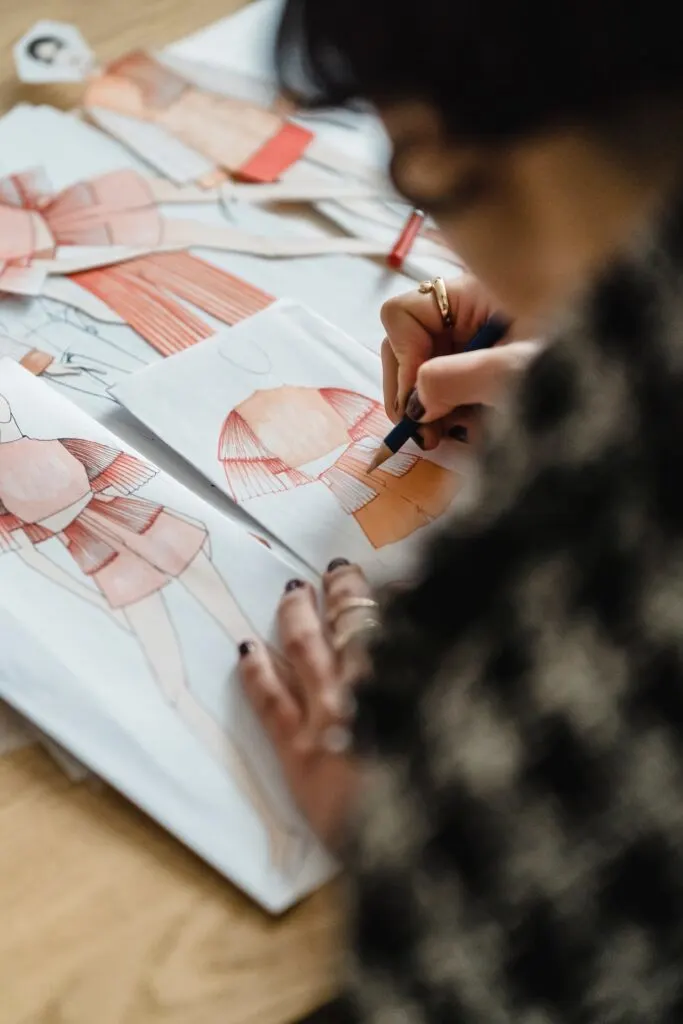Fashion and art share a close relationship, often intersecting and influencing each other in various ways. Both art and style are forms of creative expression. Artists and fashion designers use their skills and imagination to communicate ideas, emotions, and aesthetics through their work.

They employ color, texture, shape, form, and composition to create visually compelling pieces that evoke certain feelings or make a statement. Art and style are closely intertwined aspects of creative expression. Art encompasses a broad range of mediums and forms of human expression.
Fashion refers to the distinctive characteristics, techniques, and visual elements employed by an artist or associated with a particular artistic movement.
Here are some key points to understand the relationship between art and style.
Art as a Broad Concept
Art is a vast domain that encompasses various creative disciplines such as painting, sculpture, architecture, literature, music, dance, film, and more. It is an avenue of expressing ideas, emotions, or experiences through imagination, skill, and aesthetics.
Style as Visual Language
Style refers to the unique and recognizable way an artist or artistic movement expresses itself visually. It encompasses composition, color palette, brushwork, line quality, texture, subject matter, and overall approach. Style is the visual language through which an artist conveys their creative vision or intention.
Individual Style
Each artist develops their style over time, influenced by personal experiences, cultural background, training, and exposure to various artistic influences. An artist’s style projects their personality, interests, and choices.
The choices evolve as artists experiment, refine their techniques, and explore different works. A great analogy of personifying art through experimentation is selecting eyeglasses. An artist can choose a model that portrays stylishness, intellect, boldness, etc., to inspire their feelings and work.
Movement and Period Styles
Art movements and historical periods often exhibit distinct styles shared among artists. Specific artistic philosophies, techniques, subject matters, and aesthetics characterize the styles.
For example, the Impressionist movement is known for its emphasis on capturing the effects of light and color. The Cubist movement sought to depict objects from multiple viewpoints simultaneously.
Subjectivity and Interpretation
The perception of art and style is subjective and can vary from person to person. What one individual finds appealing or resonant may differ from another’s interpretation. Personal taste, cultural background, and individual preferences influence the appreciation of art and style.
How Do You Converge Art and Style?
Art and style converge in various ways, as they are interconnected and often influence each other as below:
1. Expression and Communication
Art is a form of creative expression, and style is how artists express themselves. An artist’s style encompasses their unique approach to composition, use of color, brushwork, or any other medium-specific techniques. The style becomes a visual language through which the artist communicates their ideas, emotions, or messages to the viewer.
2. Aesthetic Choices
Style plays a significant role in determining the overall aesthetic of an artwork. It encompasses the artist’s preferences, influences, and how they interpret the subject matter. The preferred style can evoke moods, convey specific narratives, or create visual effects. Whether an artist opts for a realistic, abstract, impressionistic, or any other theme, it impacts the viewer’s perception and emotional response to the artwork.
3. Cultural and Historical Context
Cultural and historical context influences art and style are also influenced by the in which they emerge. Different art movements throughout history have introduced distinct impressions that reflect prevailing ideas, values, and social conditions of the generations.
For example, the Renaissance period came with a realistic and harmonious style. The Impressionists focused on capturing fleeting moments and the effects of light. The art and style convergence within these movements shaped the trajectory of art history.
4. Individuality and Innovation
The artistic style allows artists to develop personality and create a recognizable signature. Through experimentation and innovation, artists can push the boundaries of existing fads or invent new ones.
The convergence of art and style often occurs when artists challenge established norms and conventions, introducing fresh perspectives and approaches to their work. These innovations can inspire other artists and form new art movements or styles.
5. Influence and Inspiration
Artists often draw inspiration from other artists, art movements, or styles that resonate with them. They may combine elements, techniques, or concepts from various sources and merge them with their artistic vision. This convergence of influences can result in the development of hybrid styles or a fusion of different artistic traditions, creating unique and diverse artworks.
Art and Style Are One
Art and style converge through the artist’s creative expression, aesthetic choices, cultural context, individuality, and the influence and inspiration they draw from various sources. The interaction between art and style is dynamic and ever-evolving, contributing to the rich tapestry of artistic expression throughout history and contemporary art.
Art drives fashion, influencing creative expression. While art represents a broad domain of human creativity, style refers to unique visual characteristics and approaches used or associated with specific artistic movements.
The relationship between art and style is dynamic, evolving through artists’ individuality, the influence of movements & periods, and the exploration and experimentation within the artistic community.
